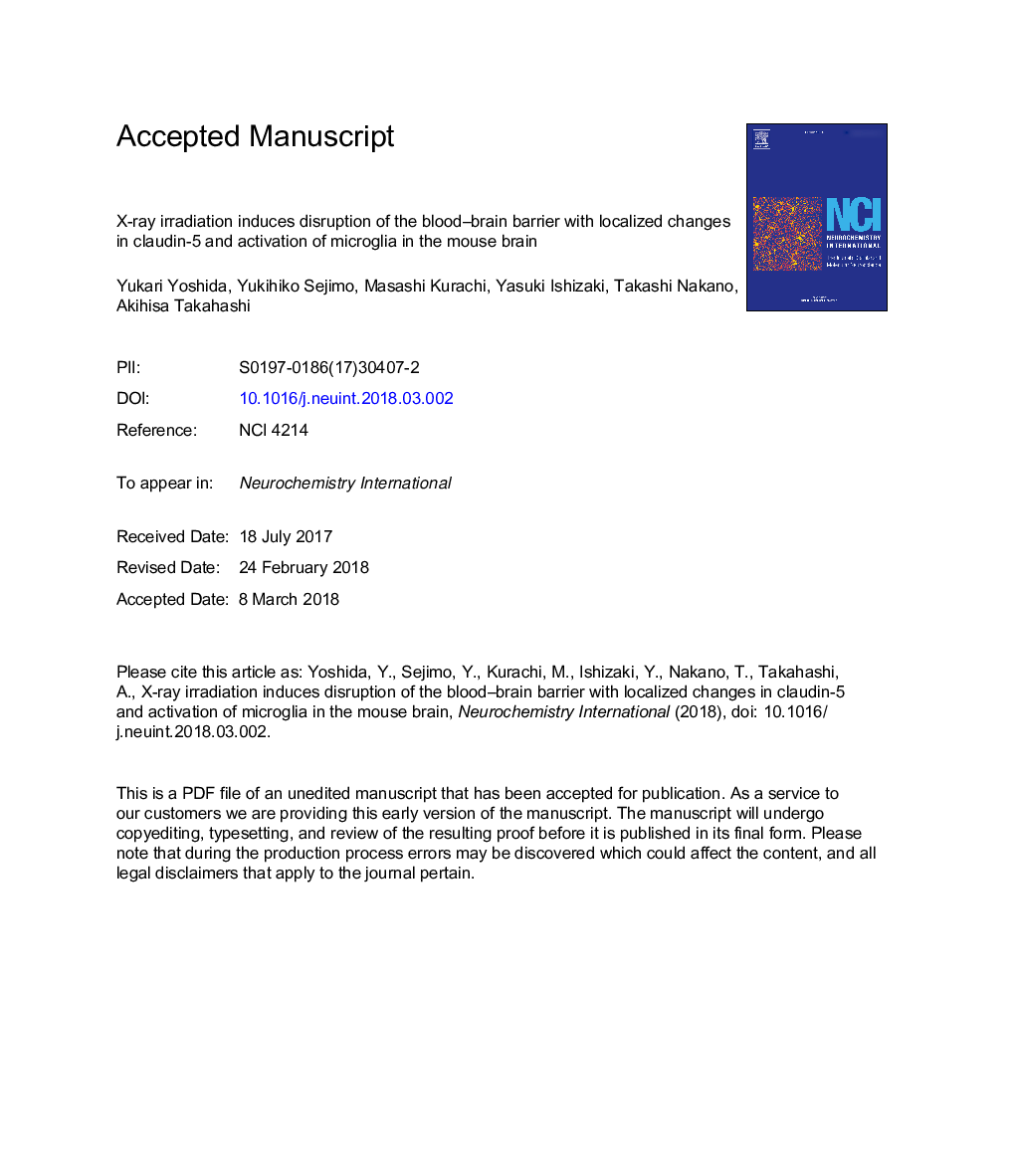| Article ID | Journal | Published Year | Pages | File Type |
|---|---|---|---|---|
| 8956365 | Neurochemistry International | 2018 | 41 Pages |
Abstract
X-ray irradiation (X-irradiation) induces disruption of the blood-brain barrier (BBB). However, the mechanisms underlying the permeability changes are unclear. Therefore, in the present study, we examined the cellular and molecular changes produced by X-irradiation of the brain. Male ICR mice were irradiated locally on their head, posterior to the bregma, except for the eyes, with a single dose of 60â¯Gy. BBB permeability was assessed using Evans blue dye. We also examined vascular endothelial growth factor (VEGF) expression, microglial morphology, and the expression of the tight junction protein claudin-5 from 0.5 to 7 days after irradiation. An increase in BBB permeability and a decrease in the expression of VEGF protein occurred in a time-dependent manner. In addition, the number of activated microglia (CD68+/Iba-1+ double-positive cells), the amount of tumor necrosis factor-α protein and immunoreactivity of nuclear factor-kappaB increased by irradiation, while the expression of claudin-5 on vascular endothelial cells diminished markedly in the cerebral cortex starting 0.5 days after irradiation. These results suggest that the downregulation of claudin-5 expression mediated by activated microglia may contribute to the BBB disruption induced by X-irradiation.
Related Topics
Life Sciences
Biochemistry, Genetics and Molecular Biology
Cell Biology
Authors
Yukari Yoshida, Yukihiko Sejimo, Masashi Kurachi, Yasuki Ishizaki, Takashi Nakano, Akihisa Takahashi,
